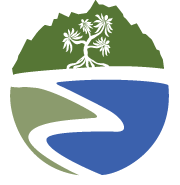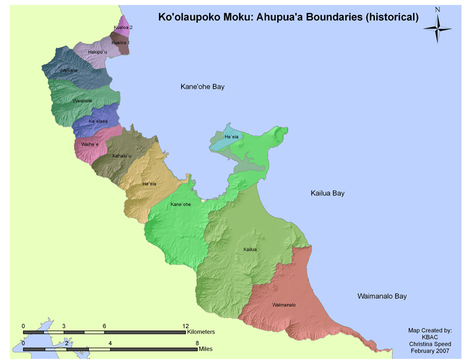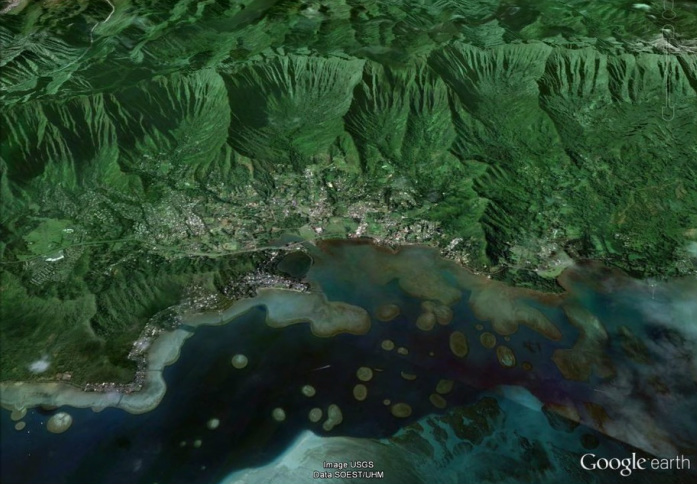|
A watershed is an area of land, generally designated by a valley or a mountain, where all water from rain or springs flow into a common body of water. Hawai'i's watersheds converge into a stream and eventually lead out into the ocean, while some watersheds flow into a lake, wetland or estuary. In a natural, undeveloped watershed, the water moves from mauka (the mountains) to makai (the ocean) and all along the way the water is being absorbed by plants and soils and slowly replenishes our groundwater aquifers. Unfortunately in our current developed communities, water runs over pavement instead of following the natural water cycle. Human activities along with urbanization and other types of development have severely altered the natural landscapes and threaten our the health of our terrestrial and marine ecosystems.
In Hawai'i, a watershed is similar to the Hawaiian concept of an ahupua'a, which is a mauka to makai land division determined by streams and mountains as the boundaries. Within each ahupua'a, Hawaiians practiced a sustainable and responsible stewardship for the land which resulted in a desirable balance of the environmental, social and cultural resources within each ahupua'a. HOK uses the ahupua'a structure to manage our current watershed management practices and target specific problems within Ko'olaupoko. Watershed management involves the development of plans, programs and projects that work to restore, enhance and protect ecological, social and cultural well being within a watershed boundary. In Koʻolaupoko, ecosystem degradation and land-based pollution are the leading threats to ocean health and resources. These problems are most often the result of urban development, agriculture, habitat alterations such as streams lined with concrete, loss of wetlands, non-point source pollution, on-site sewage systems and introduction of non-indigenous flora and fauna all contributing to poor water quality and loss of ecosystem function. Significant pollution including sediments, nutrients, suspended solids, heavy metals and trash. These pollutants have an impact such as:
|
Can you identify the watersheds in this Google Earth image of Northern Kaneʻohe ?
What types of activities threaten environmental, social and cultural resources in this area?
|
HOK focuses on implementing on-the-ground projects that directly address watershed and water quality issues. Projects include riparian restoration, low-impact retrofits (LIR) and residential rain gardens. Every project involves a significant community component from seeking project input, design alternatives or involvement in long-term maintenance. Additionally, as a community supported non-profit, tax-deductible donations allow HOK to provide environmental education and perform necessary long-term maintenance at restoration projects, ensuring the protection of ocean health for future generations.
|





